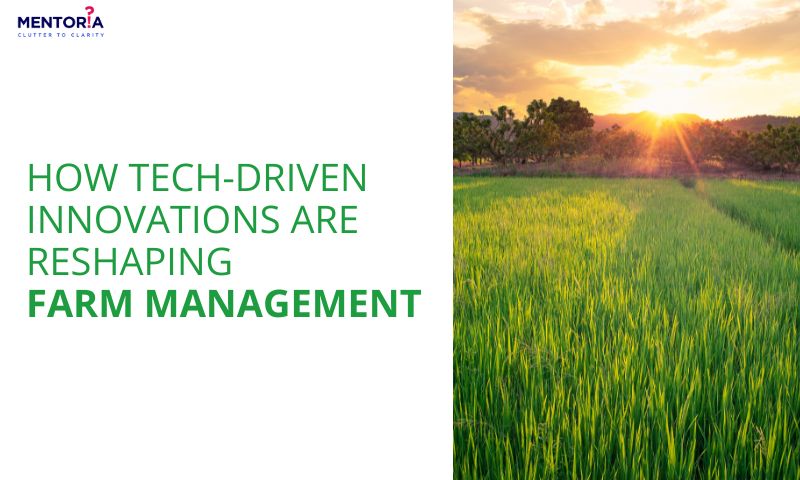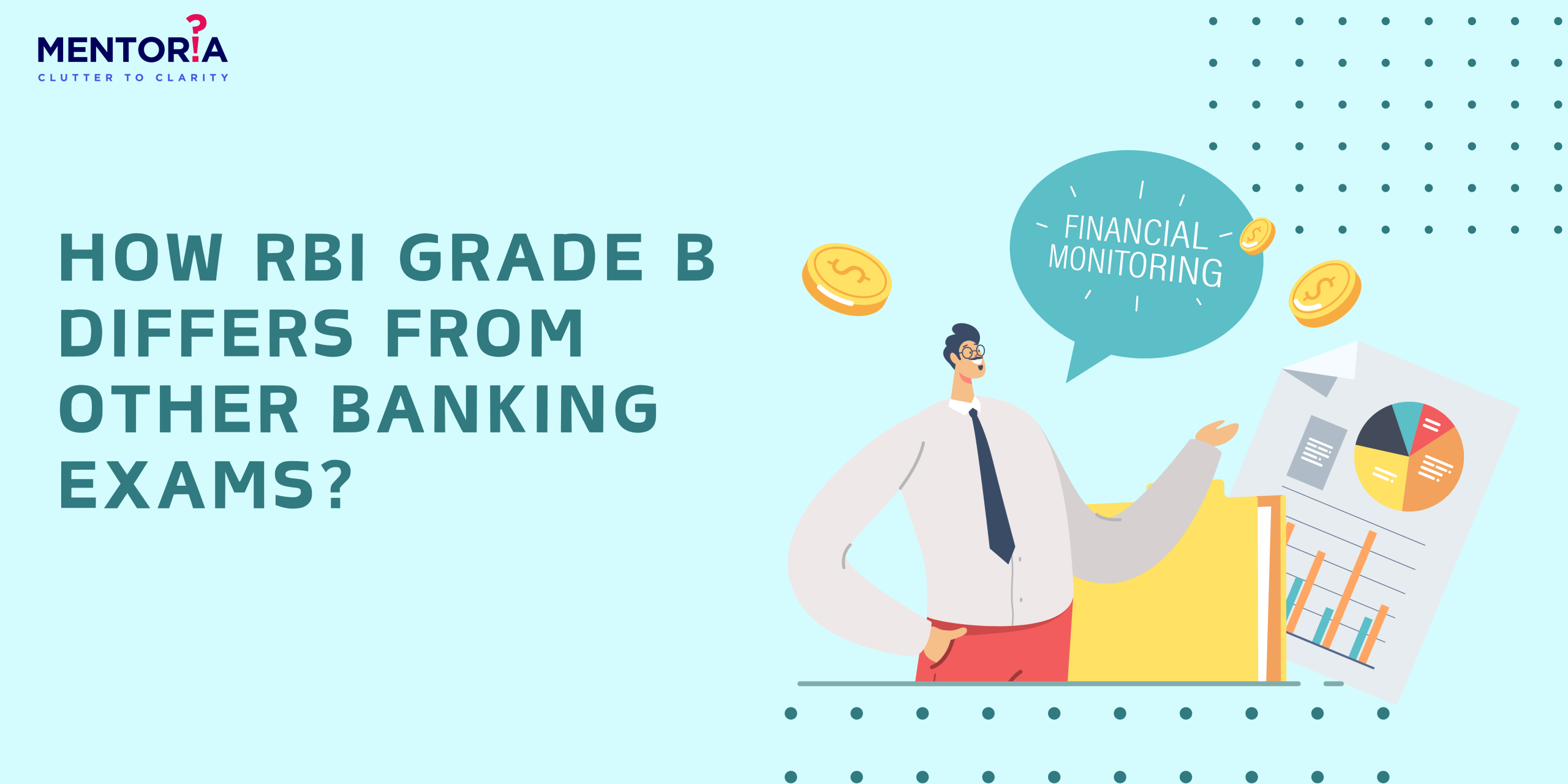How Tech-Driven Innovations Are Reshaping Farm Management

Jump to Section
Agriculture, the backbone of our civilisation, is undergoing a rapid transformation fuelled by technological advancements. In an era where the global population is expanding, and climate change poses significant challenges, the need for sustainable and efficient farming practises has never been more critical. Thankfully, innovative technologies are emerging as powerful tools in revolutionising the agricultural industry. From precision farming to data-driven decision-making, these advancements are empowering farmers, increasing productivity, and promoting sustainable practises.
Aided by significant advancements in technology, farming innovation really began to pick up during the second half of the 20th century and into the beginning of the 21st century. Today, these ongoing developments are growing exponentially and continue to change agricultural technology and how farmers work, and therefore, what we can accomplish through agriculture.
How Precision Agriculture Is Cultivating Intelligence
Gone are the days of sowing seeds blindly and hoping for a bountiful harvest. Enter precision agriculture, a game-changer that utilises a slew of technologies to optimise every aspect of farming. Drones buzz overhead, capturing high-resolution images of fields, providing farmers with real-time insights into crop health. These drones monitor everything from pest infestations to nutrient deficiencies, enabling farmers to take targeted and timely actions.
Precision agriculture is a revolutionary approach to farming that combines cutting-edge technology and traditional farming practises. It involves the use of drones, satellites, smart sensors, and autonomous machinery to monitor crop health, optimise inputs, and ensure the long-term health of the land. These aerial devices capture high-resolution images, providing detailed insights into crop health, nutrient deficiencies, disease, and pest infestations. Satellites, once reserved for space exploration, have become indispensable tools in precision agriculture,
offering a top-down view of fields, providing farmers with a comprehensive understanding of soil conditions, moisture levels, and variability within a single field. This macro perspective allows for precise decision-making, from optimising irrigation schedules to identifying areas that may require additional attention.
Smart sensors planted in the soil collect data on moisture levels, temperature, and nutrient content, creating a real-time feedback loop that allows farmers to make immediate decisions about irrigation, fertilisation, and other critical aspects of crop management. Autonomous machinery, equipped with GPS technology, can navigate fields with incredible accuracy, enhancing efficiency and reducing the need for manual labour. Data analytics is another key aspect of precision agriculture, harnessing and processing the vast volume of information collected from drones, satellites, and sensors using advanced algorithms. Machine learning helps identify patterns, predict future trends, and offer insights beyond traditional farming knowledge.
Precision agriculture is not just about increasing productivity; it’s about sustainability. By precisely managing resources, farmers can reduce environmental impact, optimise inputs, and ensure the long-term health of the land. As we continue to embrace the possibilities of precision agriculture, we are cultivating a smarter, more sustainable future for farming. For example, a farmer in the Midwest can use precision agriculture techniques to vary the amount of irrigation his corn fields receive. By analysing soil moisture data collected from sensors, he ensures that each section of his fields gets precisely the right amount of water, leading to increased crop yields and water conservation.
Smart Sensors and the Internet of Things (IoT), The Farm’s Nervous System
The farm of the future is a living entity with its own nervous system, powered by Smart Sensors and the Internet of Things (IoT). These sensors are scattered throughout fields, soil, and livestock, gathering data and transmitting it to a central hub. They are like a sixth sense, allowing farmers to perceive and respond to changes in real-time. Soil sensors measure moisture levels, temperature, and nutrient content, allowing farmers to make informed decisions about irrigation, fertilisation, and crop health. Livestock are equipped with smart collars or tags, transforming them into walking data hubs that monitor the health and location of each animal. This technology ensures early detection of illness and prevents wandering into uncharted territories.
The Internet of Things connects these smart sensors into a seamless network, communicating with each other and farmers in real-time. Farmers receive instant updates and alerts from their sensor-driven nervous system, providing insights and solutions. The beauty of this interconnected web is its ability to prevent problems before they arise, proactively managing the farm’s well-being. However, data security and privacy are crucial as the farm’s nervous system requires responsible use to reap its full benefits without compromising the integrity of the operation or the privacy of the data. In conclusion, Smart Sensors and the Internet of Things have transformed the farm into a responsive, intelligent organism, providing farmers with unprecedented insights into their operations. This is not just farming; it’s farm management at its smartest, where every plant, animal, and byte of data contributes to sustainable and efficient agriculture. A large-scale vineyard in California uses IoT sensors to monitor soil moisture levels. The data collected helps vineyard managers optimise irrigation schedules, ensuring that grapevines receive the ideal amount of water, leading to higher-quality grapes.
Autonomous Machinery, Tractors with a Technological Twist
The era of the humble tractor has evolved into a high-tech spectacle, with autonomous machinery turning fields into precision performance stages. These tractors are equipped with GPS and sensors that turn them into the agricultural equivalent of a self-driving car, allowing farmers to orchestrate the entire symphony from a digital command centre. Autonomous machinery does not just plough fields; it performs tasks with the precision of a surgeon, optimising the use of space and minimising waste. It is not just following a predetermined path; these robotic workhorses are adapting on the fly, navigating around obstacles like a seasoned dance partner avoiding toes.
The efficiency gains are revolutionary, as tasks that used to require hours of manual labour can now be executed with the precision of a well-choreographed ballet. This frees up farmers to focus on higher-level decision-making, turning them into agricultural strategists rather than mere labourers. Lower costs are also reduced, as these smart machines can operate around the clock without a coffee break or a grumble about overtime pay. The adaptability of autonomous machinery doesn’t stop at ploughing; they can seamlessly transition from planting to harvesting, performing intricate tasks with a precision that would make even the most seasoned farmer do a double take. A dairy farm in New Zealand employs robotic milking machines that allow cows to be milked at their convenience. This reduces the need for manual labour and increases milk production efficiency.
However, with great power comes great responsibility. As we welcome these robot tractors into the agricultural fold, questions about data security, maintenance, and ethical considerations come to the forefront. It’s not just about having cool gadgets in the field; it’s about ensuring that the technology is harnessed responsibly and sustainably. In conclusion, the tractor with a technological twist isn’t just a farm implement; it’s a symbol of the agricultural revolution.
Data Analytics, Harvesting Insights for Success
Data analytics is revolutionising the farming industry by turning fields into fertile grounds of insight and success. It’s not just about crunching numbers; it’s about turning raw data into golden nuggets of wisdom. In the world of agriculture, where weather is fickle and pests are unpredictable, these insights can make the difference between a bumper harvest and a field of woes. Data analytics is like having a weatherman, market analyst, and fortune teller rolled into one, helping farmers make strategic decisions. Machine learning algorithms take the stage, predicting future trends and identifying patterns that human eyes might miss. The farm becomes a canvas, and data analytics paints a picture of success with every pixel of information.
In the age of data analytics, it’s not just about reacting to problems; it’s about preventing them. Early warnings about potential pest infestations, disease outbreaks, or adverse weather conditions become the norm. Market trends become strategic tools, allowing farmers to adjust their planting schedules, choose crops with higher market demand, and negotiate better prices. Resource optimisation is another key aspect of data analytics. Farmers are the maestros, conducting the symphony of data analytics to create a masterpiece of a harvest. They interpret the insights, make informed decisions, and turn data into action. However, as we dive deeper into the world of data analytics, there’s a critical need for responsibility. Ethical use of data, cybersecurity, and ensuring that technology benefits not just the farm but the entire agricultural ecosystem are paramount considerations.
Data analytics is not just a tool for farmers; it’s the cornerstone of success in modern agriculture. It’s not about replacing the farmer; it’s about empowering them with knowledge. Welcome to the farm of the future, where data isn’t just harvested; it’s the crop that yields success. A soybean farm in Brazil utilises data analytics to predict disease outbreaks. By analysing historical weather data, they can anticipate disease-friendly conditions and take preventive measures, reducing crop losses.
The Future of Farming, A Tech-Infused Landscape
The future of farming is not just about fields and furrows, but a tech-infused landscape that redefines the essence of agriculture. Vertical farms, robotic helpers, and AI grandmasters are glimpses of what’s to come in this new world. Traditional fields are being replaced by skyscrapers, optimising every inch of space and eliminating seasonal limitations. Drones are evolving into sophisticated crop dusters, applying precision treatments with surgical accuracy, and robots roaming the fields with the finesse of agricultural ninjas. Artificial intelligence will be the brains behind the brawn, with smart algorithms analysing data to predict weather patterns and the future of crops. The farm becomes a strategic chessboard, with AI acting as the grandmaster, making moves that keep every piece of the farm in the game. The Internet of Things (IoT) will be the glue that binds every aspect of the farm into a harmonious symphony of efficiency, with sensors in the soil, equipment, and animals communicating seamlessly, creating a network where every piece of information is a note in the grand orchestration of agriculture. However, this tech-infused future has its challenges, such as data security, ethical AI use, and ensuring that technology doesn’t create a digital divide in agriculture. Responsible innovation becomes the guiding principle, ensuring that the benefits of technology reach every corner of the farming community. In conclusion, the future of farming is not just green fields and blue skies; it’s a tech-infused landscape that’s as dynamic as the crops it nurtures. A cooperative of coffee growers in South America uses digital farming platforms to connect with buyers directly. This allows them to negotiate better prices for their beans and access international markets more efficiently.
The marriage of technology and agriculture is not just a union of convenience; it’s a transformative partnership that is reshaping the very foundations of farming. From precision agriculture and smart sensors to autonomous machinery and data analytics, technology is not just a tool for farmers; it’s a companion, a guide, and a guardian of the fields. As we look to the future, it’s clear that the seeds of this technological revolution have been sown, and the harvest promises a bounty of possibilities for the ever-evolving world of farm management.
Encouraging Innovation With Mentoria
The technological revolution in farm management is a positive development that has the potential to benefit farmers, consumers, and the environment. Mentoria uses psychometric assessments and career exploration tools to help you identify your strengths, interests, and values. This can guide you towards fulfilling career paths and make informed decisions about your future, including guidance towards lesser known careers and pathways, like agriculture. Our algorithm matches you with experienced mentors based on your needs, goals, and preferred communication style. This ensures you get personalised guidance and support from someone who understands your situation.









